

Max Davies
How Audi, BMW, Honda, Mercedes-Benz, and Suzuki started out in Australia, and where they are now
14 Hours Ago
The Skoda Karoq is small on the outside, and practical on the inside – but some of the option costs are unbelievable.
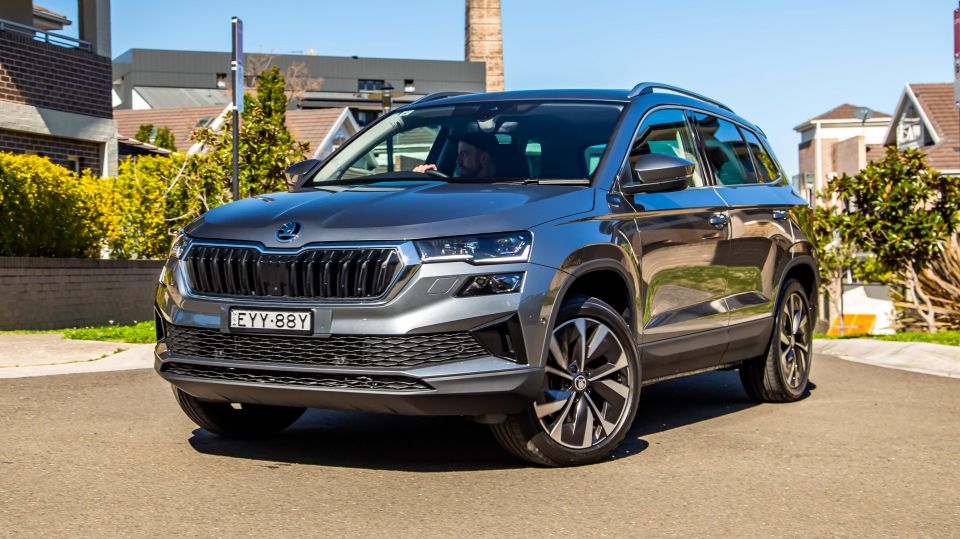
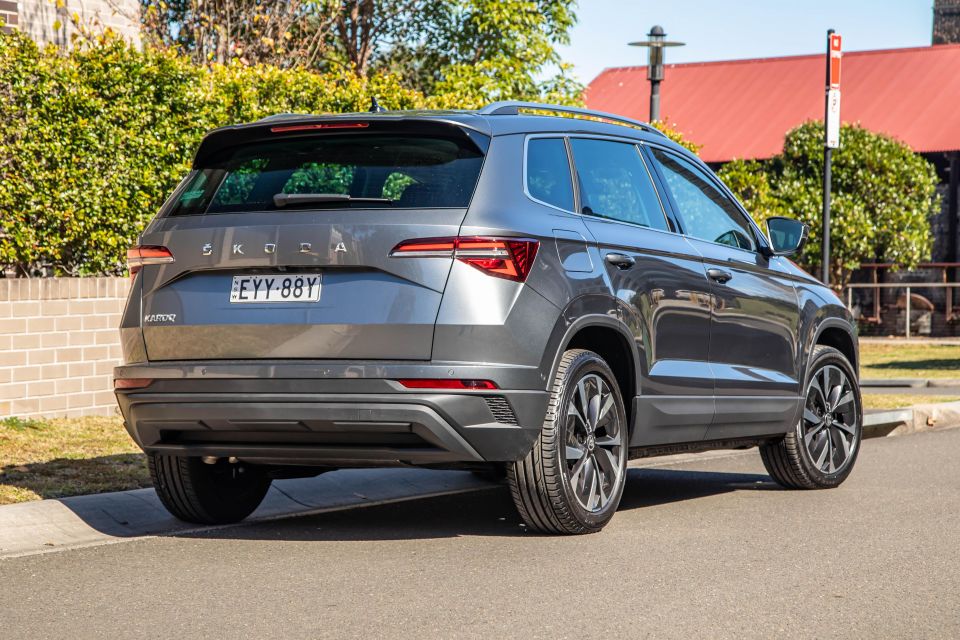

Quickly see how this car stacks up against its competition. Select any benchmark to see more details.
Where expert car reviews meet expert car buying – CarExpert gives you trusted advice, personalised service and real savings on your next new car.
The Skoda Karoq is classified as a mid-size SUV, but don’t buy into that – this is a small SUV with big car practicality.

It’s smaller than a heap of rivals that are classified as small SUVs, but somehow is supposed to compete against the Toyota RAV4, Mitsubishi Outlander and Nissan X-Trail, at least based on sales classification data.
Semantics aside, there’s a whole lot of greatness on offer in the Skoda Karoq. It’s just a damn shame it’s so expensive to get one that feels nice and has the standard gear it should have. The brand certainly seems to have priced it like a midsize SUV, in that regard.
I’ll run you through it all in this review.
The Karoq range has just been reworked a little to cover the fact that the previously-removed blind-spot monitoring, rear cross-traffic alert and lane-keep assistance systems have been reintroduced – Skoda has confirmed MY24 pricing will kick off from $45,490 drive-away.
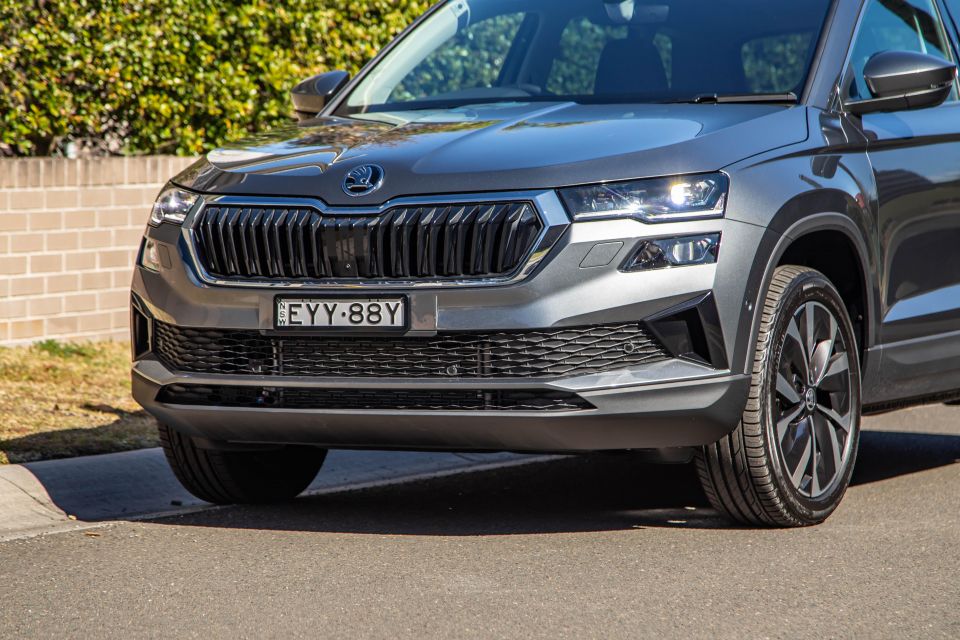
The Czech brand has also tweaked the optional packages on offer too, with the Tech Pack for the Style Grade and the Premium Pack for the Sportline now costing $5700.
It consists of an upgraded 9.2-inch touchscreen media system with satellite navigation and gesture control; Matrix LED headlights; auto park assist; a surround-view camera; Traffic Jam Assist (can semi-autonomously steer, accelerate and brake in some situations); emergency assist (can call emergency services in the event of an accident); as well as adaptive lane guidance and ambient lighting.
The Karoq Style is also available the optional Leather Seats Pack for $4700, which comprises leather-trimmed seats (black or ivory); electric front seat adjustment with memory settings and lumbar adjustment; auto-folding door mirrors with dimming, memory and reverse-tilt function; ambient lighting; LED reading lights front and rear; and footwell lighting.
Or if you want, you can get the base Style grade with the Premium Pack, which is $10,900, and combines most of the above mentioned features; as well as a heated steering wheel with paddle-shifters and a heat insulating windshield, plus headlight washers.

Oh, and the version tested here has a $1900 panoramic sunroof option too.
Then there are the paint choices. The Style grade has Energy Blue solid paint at no cost, while the Sportline model scores Steel Grey solid for no extra, and both of those colours are only available on those trim lines.
Other metallic choices such as Graphite Grey (as tested), Brilliant Silver, Moon White and Magic Black pearlescent cost $770, while premium metallic Phoenix Orange for the Style is $1100, as is Velvet Red available on both trim levels.
All told, that means you could be looking at close to $57,000 before on-road costs for the entry-level front-drive version, as tested here. Yikes.
Rival SUVs you might also want to consider including the exceptionally stylish and impressive Cupra Formentor (from $51,990), the Audi Q3 (from $50,600) or the Volkswagen Tiguan (from $42,890) – incidentally, all are from the VW Group stable with the Audi and Tiguan being closely related to the Karoq under the skin (the Cupra gets newer running gear).
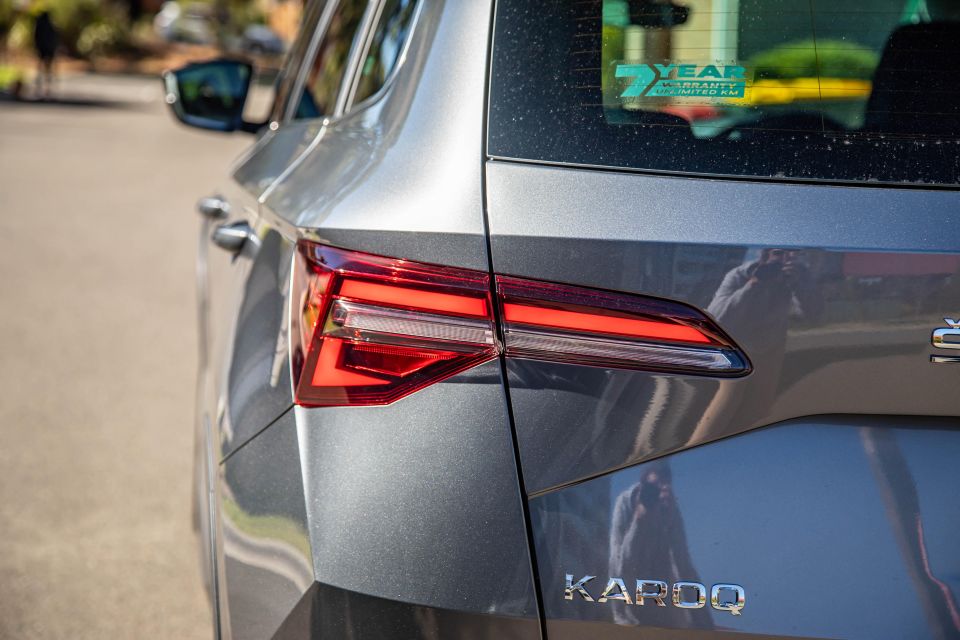
2024 Skoda Karoq pricing:
Prices are drive-away
Buy your new car without the stress. It's fast, simple and completely free.

Great service from Travis and team, second time I have used this business would not hesitate to recommend them to anyone
Craig C.
Purchased a Ford Ranger in Sunshine Coast, QLD
CarExpert helped Craig save thousands on his Ford Ranger, now let us save you on your next new car.
Find a dealObviously it will depend on whether you option one of the multiple packages available as to how the interior of the Karoq Style feels, but the one tested in this review was packed to the hilt with add-on gear, so it felt more like a luxury SUV than a base model.

Yep, from the leather-trimmed seats with heating to the heated steering wheel with paddle-shifters, to the panoramic glass roof and bigger-than-standard media screen with sat nav, it really isn’t representative of what you’re getting if you’re shopping for the base model version of the Karoq.
Even so, there are some common elements to the packaged and unpackaged models, including good storage in the cabin, comprising big door pockets, a glovebox and dash-top storage caddy, a covered centre console bin, coverable storage section in front of the gear selector with wireless phone charger, and cup holders between the seats with a removable insert – just note that not all cups will be kept safely in that middle spot.
The digital instrumentation and media system are easy enough to get to grips with, and while there are no control knobs on the screen for volume and tuning, at least this old-school system is better than in some newer VW Group products with the haptic slider bar below.
Also great to see are the climate control buttons and dials below, with a fan and temp control knobs for easy adjustability, plus buttons for the seat heating, air-con, de-misters and recirculation too.
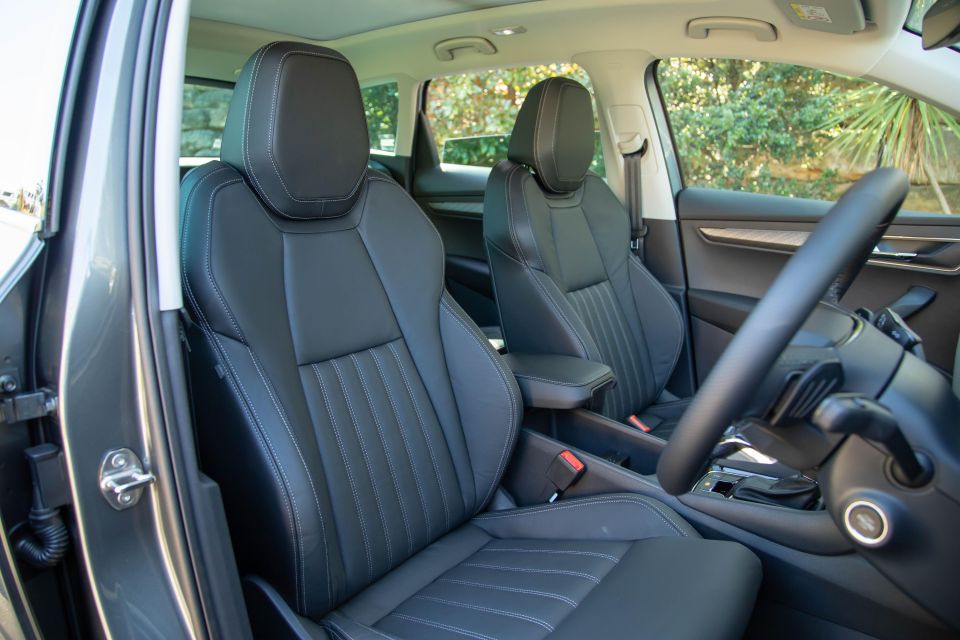
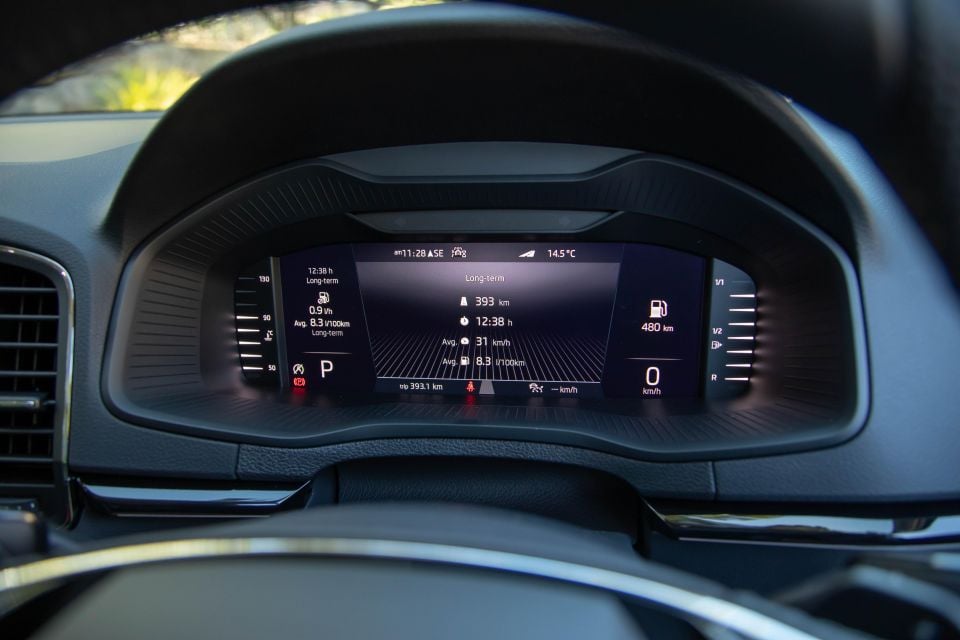
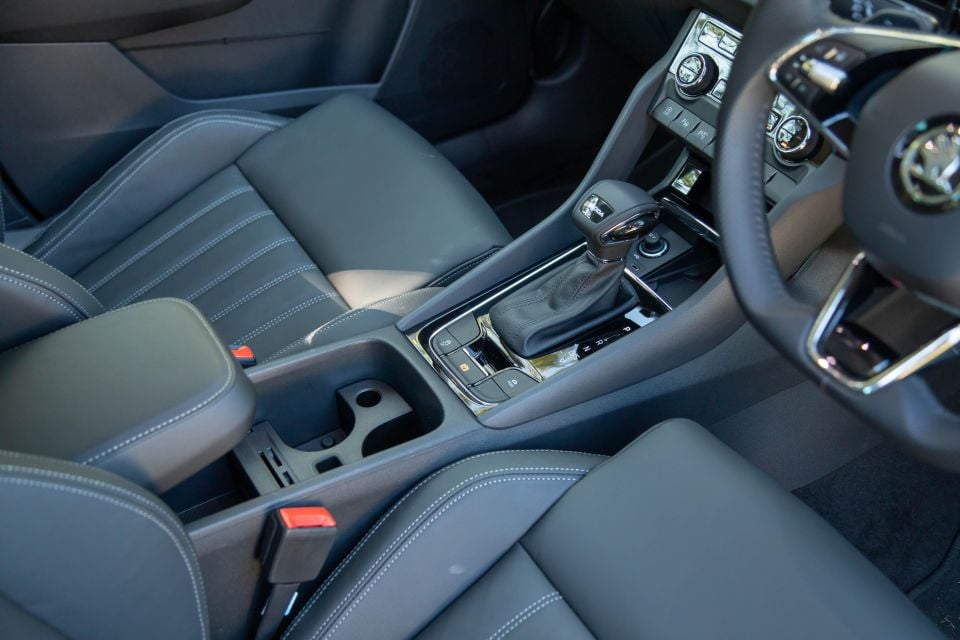
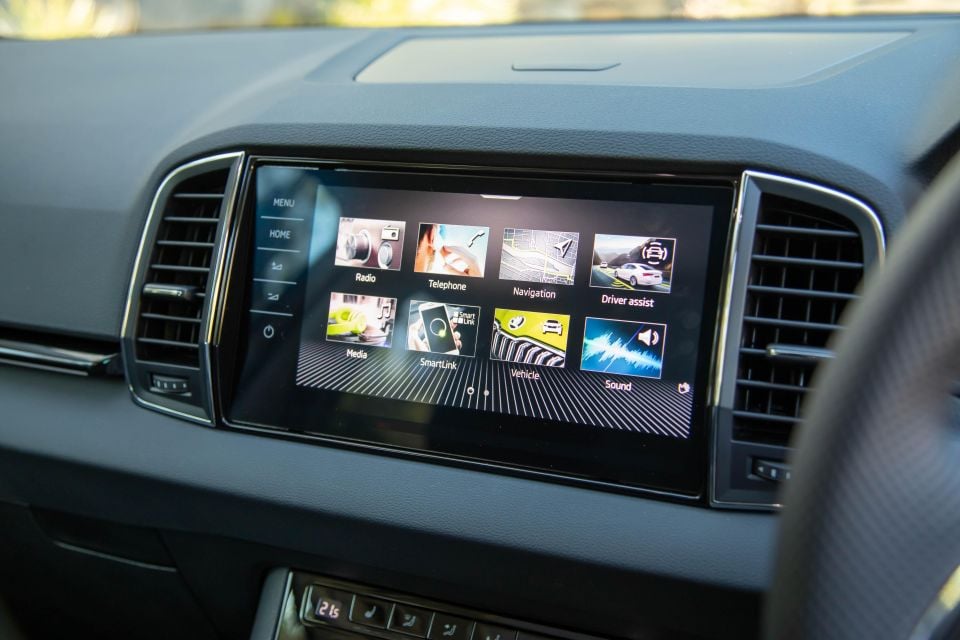
Seat comfort is good in this SUV, and people of different shapes and sizes should be able to find a suitable position. There’s reach and rake adjustment for the steering wheel too, while the buttons and roller controllers on the wheel are far simpler than some others in the ranks with haptic buttons as well.
One of the unique features the Karoq offers when compared to rivals is that it has rear seats that are individually variable. So, you can slide and recline each of the three rear spots as you wish.
Furthermore, these VarioFlex seats are even removable, so you can pull each unit out one by one if you want to. And, if you wish, you can rearrange the seating layout so you have two rear seats, or a single rear seat; and because the seatbelts and child-seat anchor points are entirely integrated into the chairs, there’s unrivalled levels of adjustability.
Perhaps the biggest issue with these (apart from them being heavy, and then having to store them if you remove them) is that the back seat space is not nearly as accommodating as some other SUVs in the “mid-size” class.

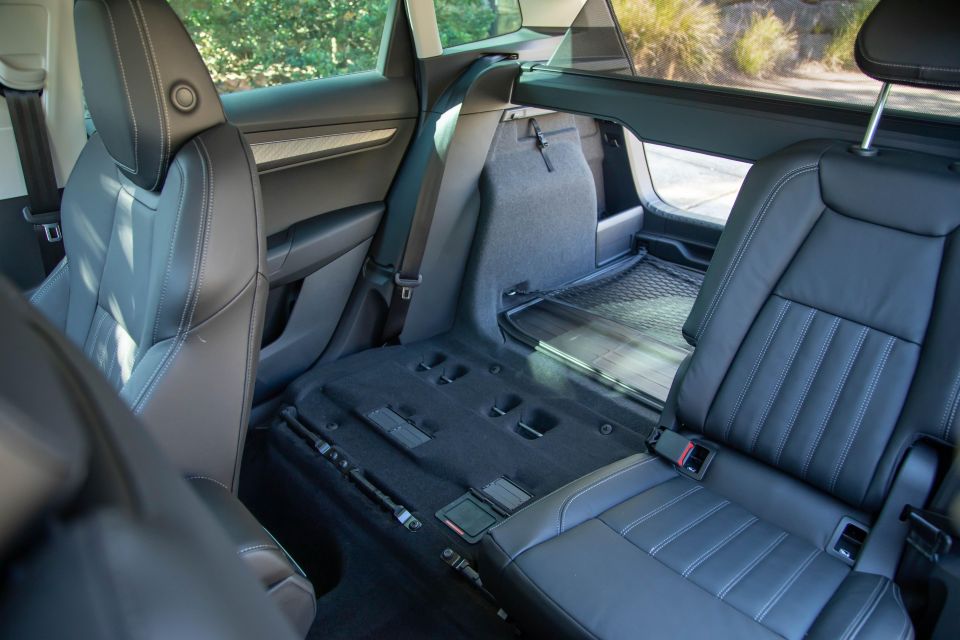
In fact, there’s literally a dozen “small” SUVs with more space. One of the best of them is the GWM Haval Jolion – it’s hugely roomy, but it, and all the others, don’t have the cleverness of the Skoda.
For someone my size (182cm / 6’0”) I struggled to have enough knee room behind my own driving position, even with the rear seat slid back as far as it would go.
That might matter to you, or not. I had no complaints from my two-year-old daughter, who rode behind the passenger’s seat and had enough room… but just bear in mind that it’s not the roomiest backseat for legroom. But headroom is good, and it’s decently wide across the back, too.
As mentioned, there are child seat attachment points for all the seats – the outboard positions have ISOFIX anchor points, and all three have top-tether spots.
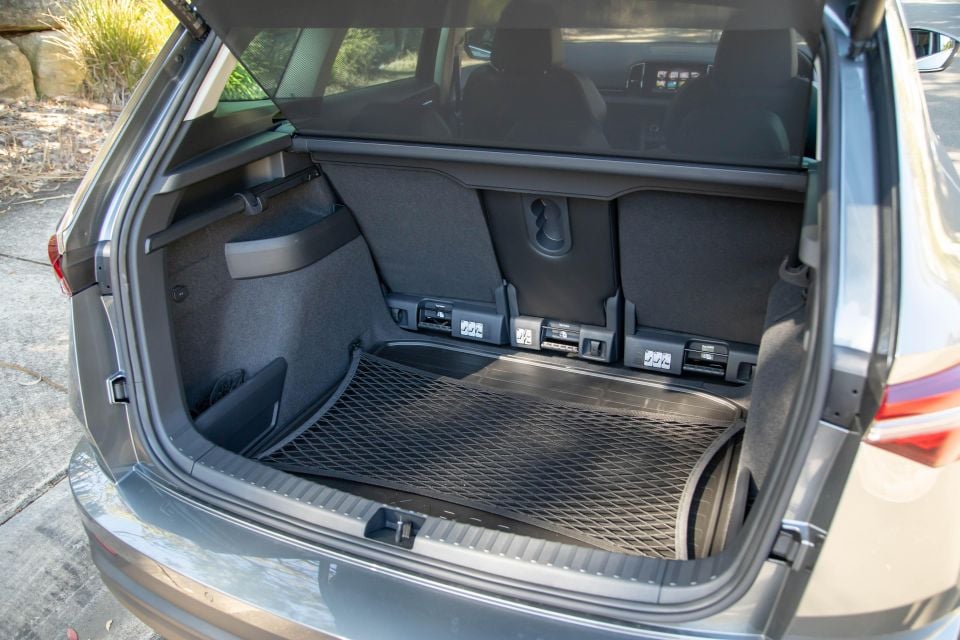
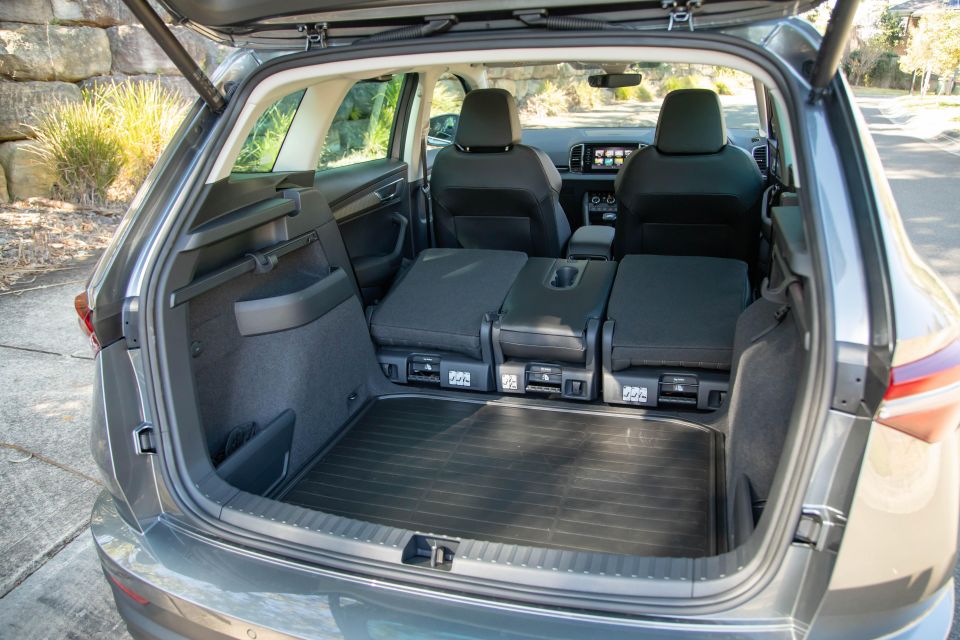
Boot space is exceptionally good for an SUV with such a small footprint, but so much of that comes down to the fact this is a boxy-bodied thing – with a tall, squared-off rear end.
That helps it offer 479 litres of cargo capacity, or compact van-like carrying capacity of 1605L when you remove those rear seats.
The 1.4-litre TSI turbocharged four-cylinder petrol engine in the Style has 110kW of power (6000rpm) while its torque output is 250Nm (1500-3500rpm).
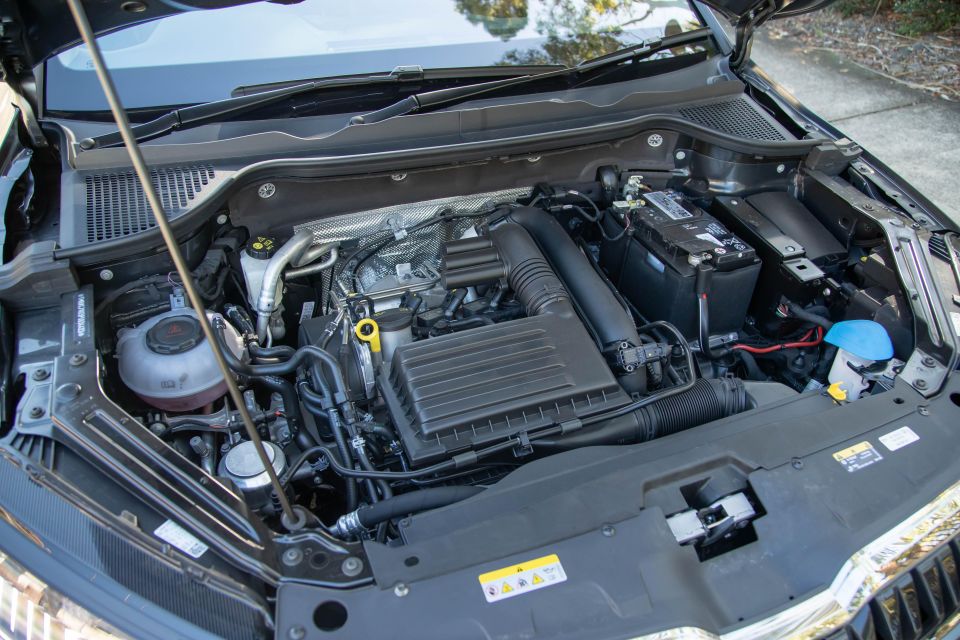
However, in this take on the theme, there’s no dual-clutch transmission involved. Instead, the Karoq Style scores an eight-speed automatic transmission, and it’s front-wheel drive.
Skoda claims a 0-100km/h time of 9.2 seconds, which is hardly speedy, but this powertrain offers zippy response, and actually jumps away from a standstill quicker than a DSG-equipped model, in some instances.
Towing capacity is 750kg unbraked, 1500kg braked, but with a limited 90kg downball weight.
Fuel consumption is rated at 6.5 litres per 100 kilometres on the official cycle, but I didn’t get close to that. My week of testing returned a real-world number of 8.0L/100km. Fuel tank capacity is 50 litres.
It’s easy to drive and even easier to live with, and that’s one of the key reasons the base Karoq Style stands out among a sea of SUVs that are trying to be all things to all people.
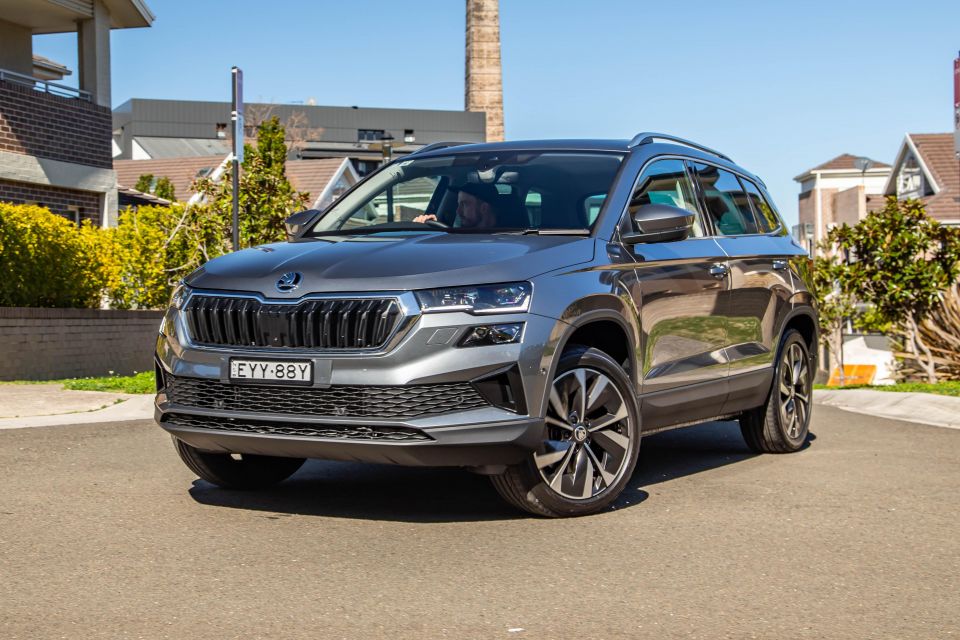
There’s a really natural steering feel with a light action at low speeds making for simpler parking moves; while it also offers the driver plenty of confidence at pace to know that it’ll go where you intend it to.
The ride is also confident, with a level of comfort and control that makes it feel like it has a firm hold on the surface, without being hard or uncomfortable over bumps. Only really sharp edges upset the chassis, but even then it’s to a lesser degree than other midsize SUVs.
The 1.4-litre turbo-petrol engine is a sprightly thing, and – in combination with the eight-speed auto – it can be a little overzealous when taking away from a standstill compared to most other Skoda products.
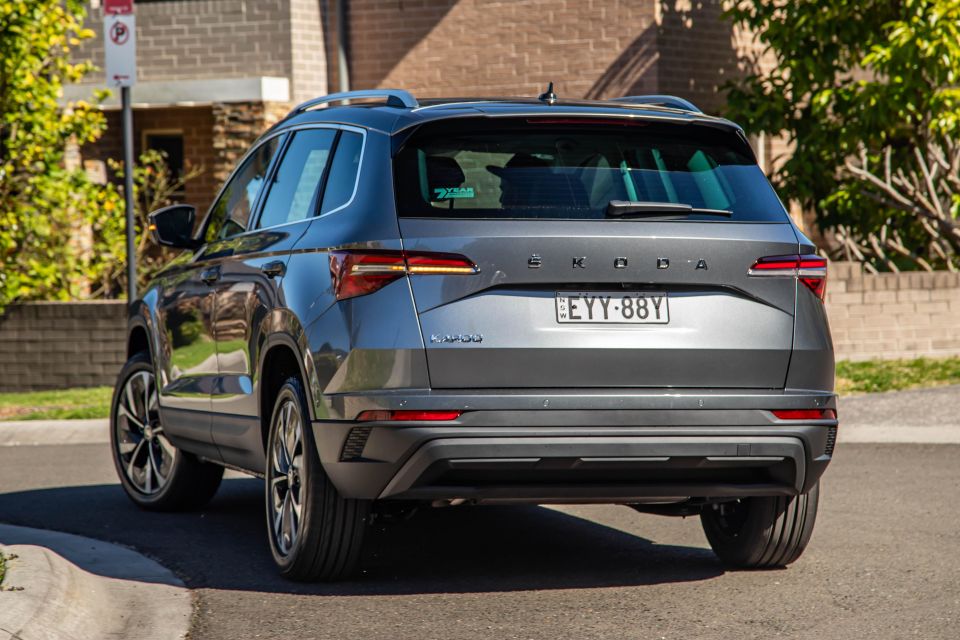
That’s due to the fact it doesn’t have the low-speed hesitation of the dual-clutch automatic transmission, which – while inherently a touch laggier from a standing start – typically feels more measured in building speed from a standstill.
In this instance, there’s a bit more of an instant response, so it’s quick to take off from the lights or at an intersection, and it can take some getting used to (especially if you’re coming out of a DSG-equipped Skoda).
It isn’t sporty to drive, and that’s fine. It isn’t overly fast, and that’s fine. And it isn’t really that exciting – and you know what? That’s totally fine. Because this is a relatively refined, comfortable and likeable SUV to spend time in.
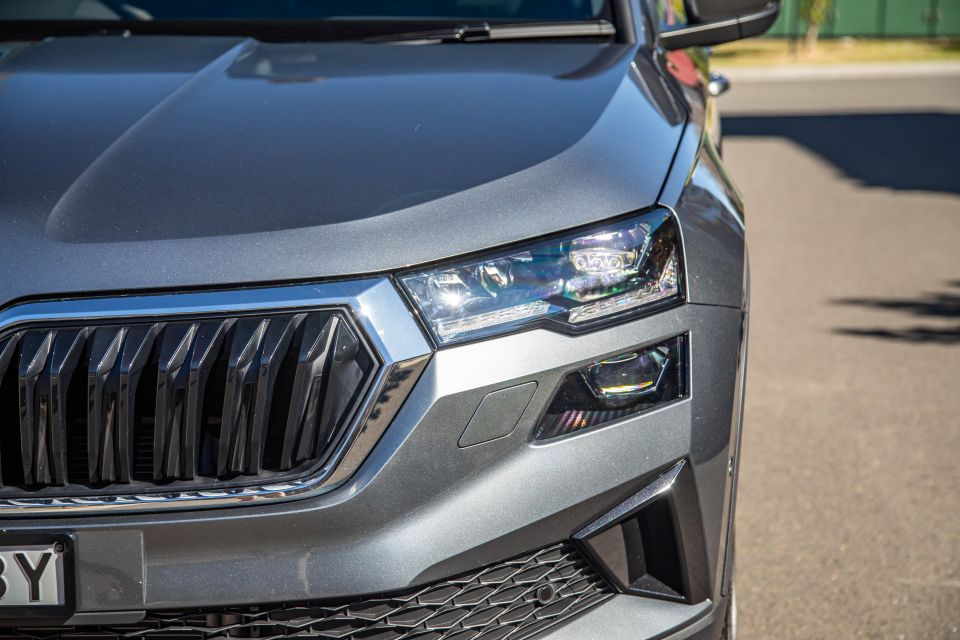



Karoq Style highlights:
Curiously, the version I tested was without the famous ‘umbrella in the door’. Weird.
The Skoda Karoq was granted a five-star ANCAP safety rating based on 2017 Euro NCAP testing
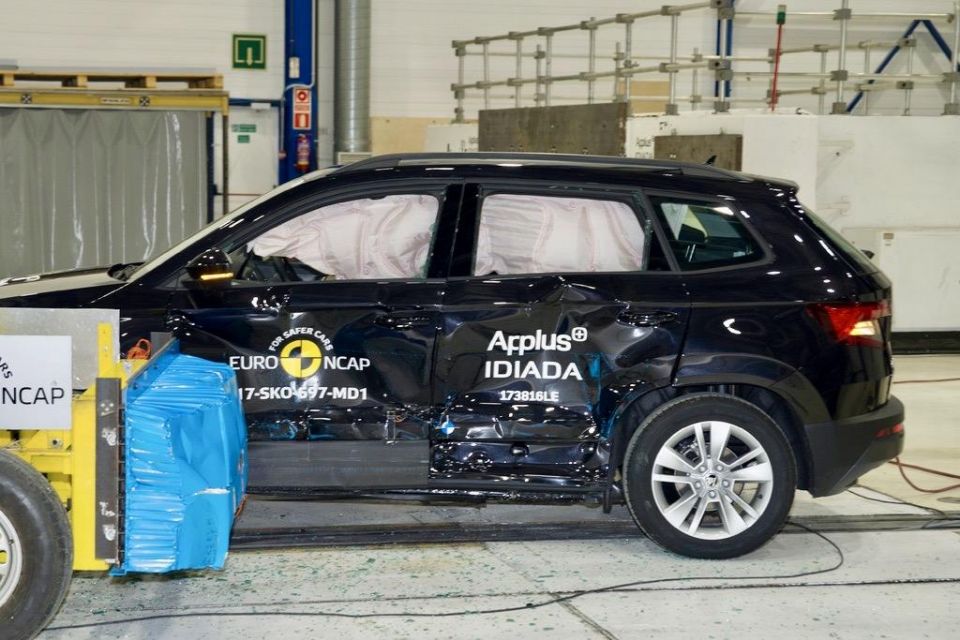
Where expert car reviews meet expert car buying – CarExpert gives you trusted advice, personalised service and real savings on your next new car.
Category scores were 93 per cent for adult occupant protection, 79 per cent for child occupant protection, 73 per cent for pedestrian protection, and 58 per cent for safety assist.
There’s finally been a return to standard inclusions for blind-spot monitoring and rear cross-traffic alert following the semiconductor shortage that has plagued the brand for what feels like several years now. Lane-keeping tech is standard now, too.
Standard safety features include:
Skoda has upped its game when it comes to warranty cover since the facelifted Karoq arrived late in 2022, with the Czech brand now offering a seven-year, unlimited-kilometre warranty as standard for all new models.
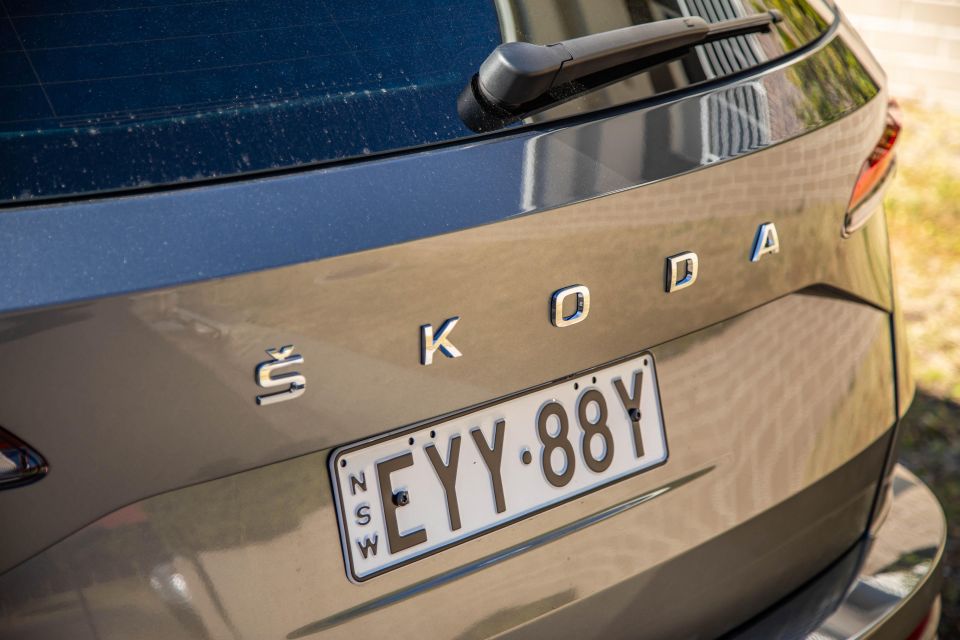
That’s great for potential peace of mind, while the brand also has a couple of service packs available.
A five-year/75,000km prepaid plan costs $1850, while the seven-year/105,000km service plan is $2750. Both represent big savings over pay-as-you-go maintenance.
There’s a roadside assistance plan for up to nine years if you service your car within the Skoda dealer network, too.
It’s hard to say whether a ‘real’ Skoda Karoq base model would feel as impressive as this car does.
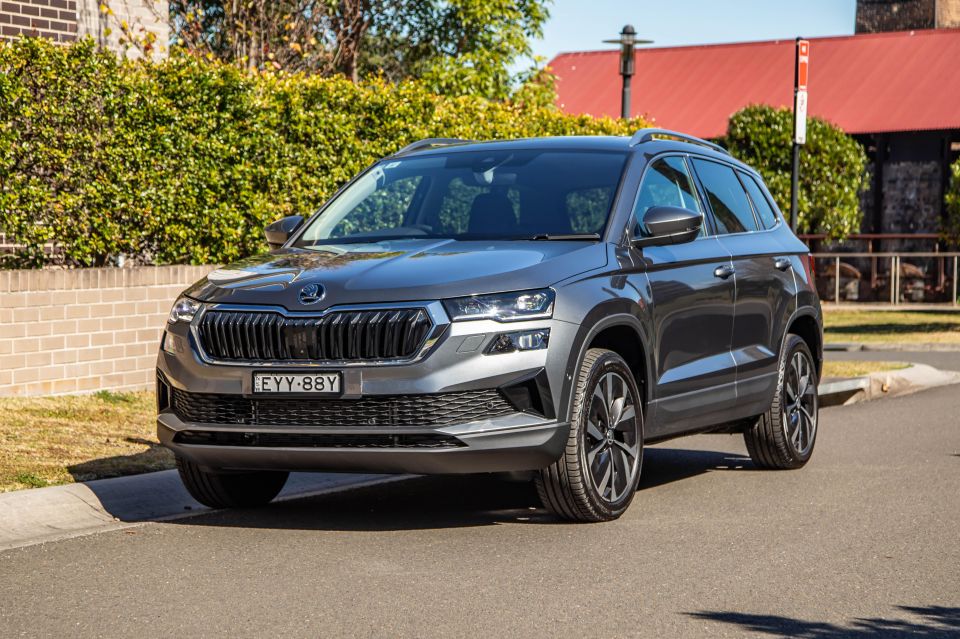
With all the additional equipment technology on offer by way of optional packages, this feels like a rather compelling alternative to some of the more expensive, luxury-branded SUVs you might also consider for close to $60,000.
I’d love to drive a base model without any options to see if it felt nearly as compelling, but even with that in mind, the Karoq’s small stature and big space make it a strong contender for those who need to pack a lot into a littler-than-average midsize SUV.
Click the images for the full gallery
MORE: Everything Skoda Karoq
Where expert car reviews meet expert car buying – CarExpert gives you trusted advice, personalised service and real savings on your next new car.
Matt has more than a decade of experience in automotive journalism, and loves exploring the pros and cons of new cars, delving into deep-dive industry stories, and going for a drive just for the fun of it.


Max Davies
14 Hours Ago


William Stopford
14 Hours Ago


Derek Fung
15 Hours Ago


Max Davies
22 Hours Ago


William Stopford
2 Days Ago


Ben Zachariah
2 Days Ago